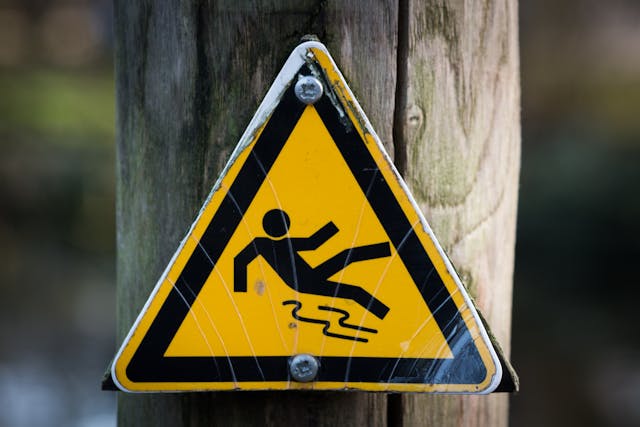Let’s say there is a dangerous cave nearby. It doesn’t matter why it is so dangerous. Make up any reason you want. Now, here is your assignment: make sure that people don’t go into this cave for the next ten years. You can’t destroy the cave or block the entrance to it. You can only put up signs around the entrance. What kind of sign would you put up? What would be on he sign? And how would you make it last for the entire ten years?
You would need to think about how the sign would hold up over time. Would it be strong enough to last a decade? What would you make the sign out of?
Ten years is not that long of a time. You might be able to get away with putting “Danger!” signs up, maybe in a few different languages. You could make them out of metal maybe. That would probably work.
Now, what if you had to do the same thing but your sign had to be effective and last for one hundred years? How much more difficult a problem does it become then? I think the problem gets a lot harder. How do you make sure that the sign stays upright for that length of time? Maybe you don’t create a tall kind-of street sign at all. Maybe you put in place something that lays on the ground so it won’t be in danger of falling over. But what if there is a natural disaster of some sort? Maybe a fire or an earthquake will come. How to you guard against that?
Finally, what if your task changed again? This time you had to construct something that warned people away from this cave for the next 10,000 years. What would you do then?
Is that even possible? Just think of all of the problems that sign would have to withstand in that length of time. One of the biggest ones is language itself. What language will people be speaking at that time in this area? There is no way of knowing, but you can bet it will be different from what exists now. Language changes throughout the years. We have words in our dictionary that didn’t exist even one generation ago. And some words may stay but have entirely different meanings. As an example consider the words “awesome” and “awful.” Those two words used to have basically the same meaning. The word “awful” once meant “worthy of profound respect.” Over time its meaning has migrated to quite the opposite.
So any sign with simply words on it, regardless of the language, is likely not to work.
So then, how about symbols?
What picture or symbol could you put on the sign that would tell people to stay away? You might think of putting a skull and crossbones on it. That symbol means something bad is near to pretty much everyone around. But you might be shocked to find out it used to have a different meaning. Paintings from the Middle Ages showed a skull and crossed-bones under the feet of Jesus on the cross. This may have been one of the first ever uses of the symbol. And it didn’t mean death. It signified the resurrection. It used to be a symbol of rebirth.
So symbols change over time too. There is no guarantee that any symbol you put on this sign will have the same meaning to people 10,000 years into the future. So you can see just how hard it is to make something that will last a long time.
How do you make Christianity last? Don’t we run into the same problems? Language changes. People change. Symbols change. So how would we make sure that Christianity survives long into the future?
It might be helpful to examine how it has lasted so long so far. After all it has been around for more than two thousand years. Not very many people speak Latin anymore. We solved that problem by printing bibles in different languages, and reprinting them when the language changed.
Matthew 24:35
35 Heaven and earth will pass away, but my words will never pass away.
That certainly helps. But I think the main reason our religion survives is through culture. We have created a way of life that teaches us to pass that on to the next generation. There is generational teaching going on. Culture is the key for something to really last.
The funny thing about culture though is that it changes. Just look at clothing styles a few decades ago. Think of the kind of music we listened to growing up, and the foods we ate. These things define our culture too, and they change. Our way of life is not static. Neither is the way we worship. Worship services are markedly different now than one hundred years ago, yet we still worship God. Things change, and the way we preach, teach, and pray changes too. This is a good thing I think. We are encouraged to foster a hand-me-down way of thinking that should also allow for superficial elements to change as life changes around us.
If you wanted people 10,000 years from now to know about Jesus, how would you go about doing that?
The answer is that you can’t. But you don’t have to. Your task is only to teach the next generation, and teach them to teach the ones that come after that. Style may change along the way, but the message remains the same. And people 10,000 years in the future will know what faith means because you and others like you passed it on.
God Bless

